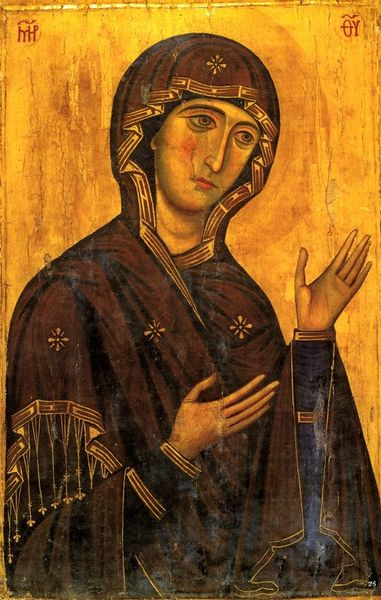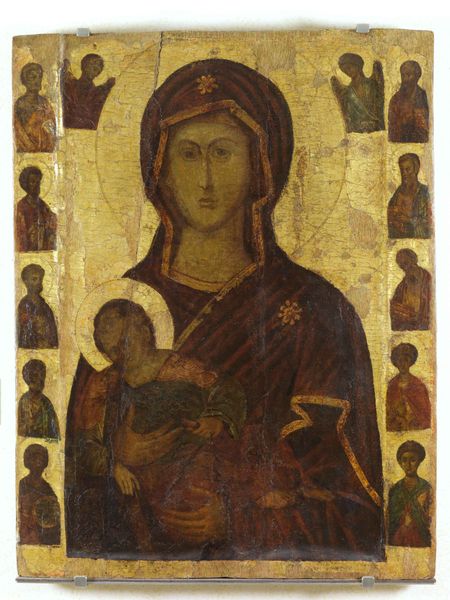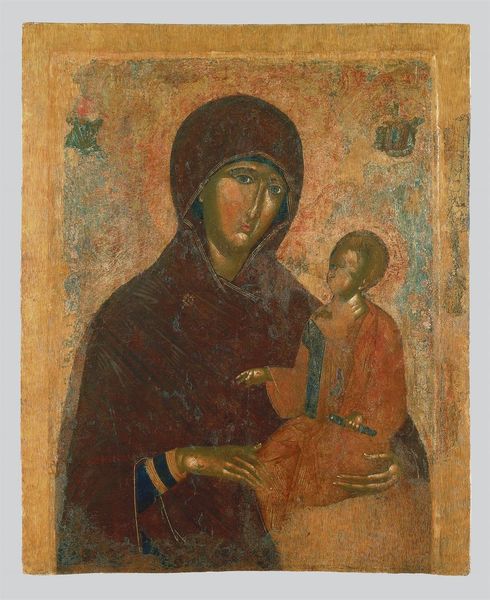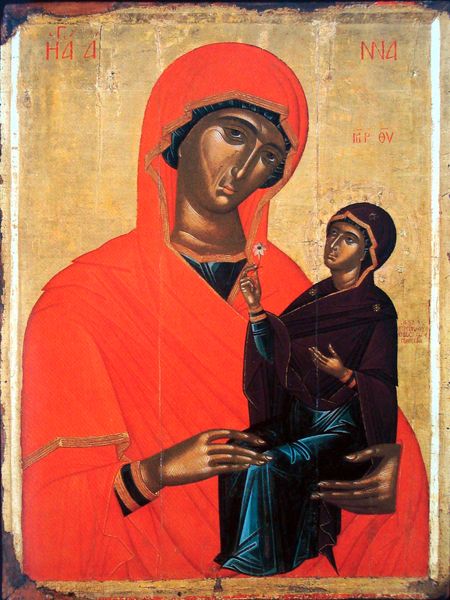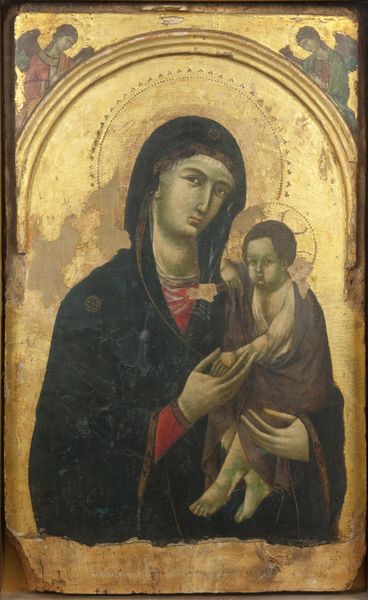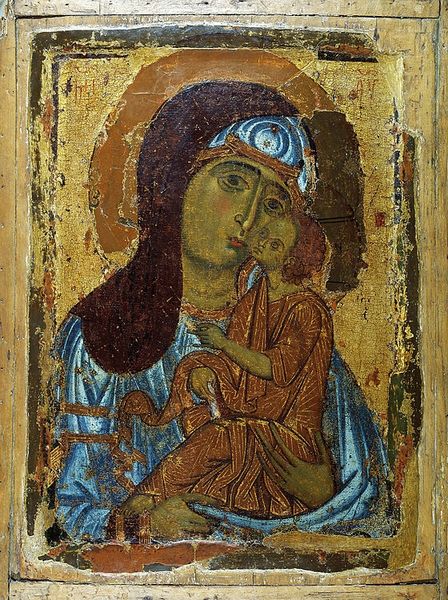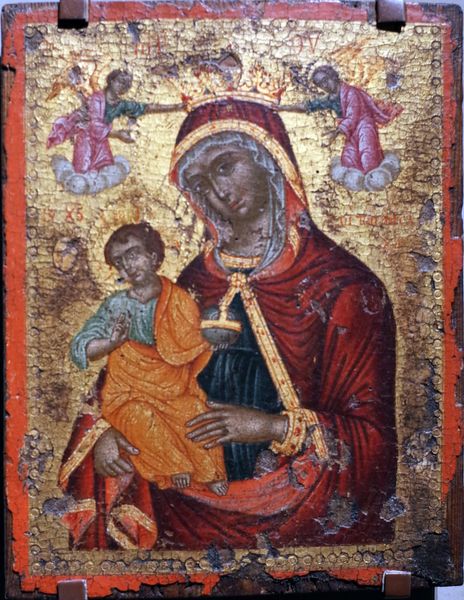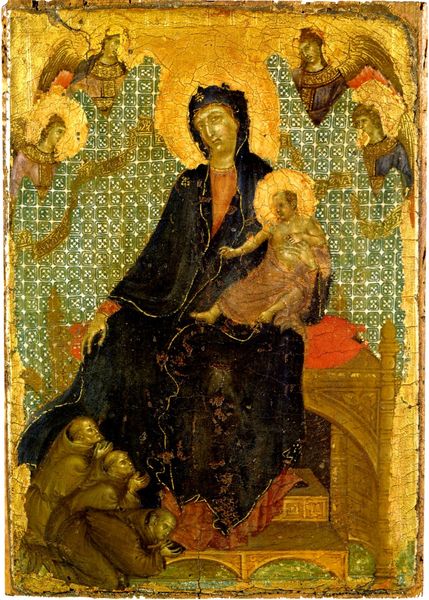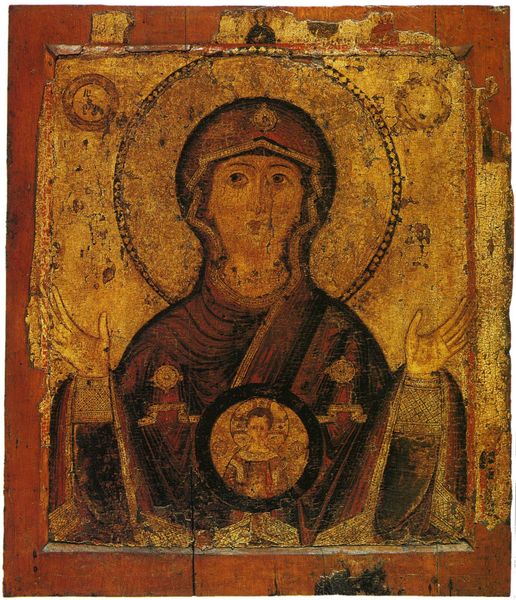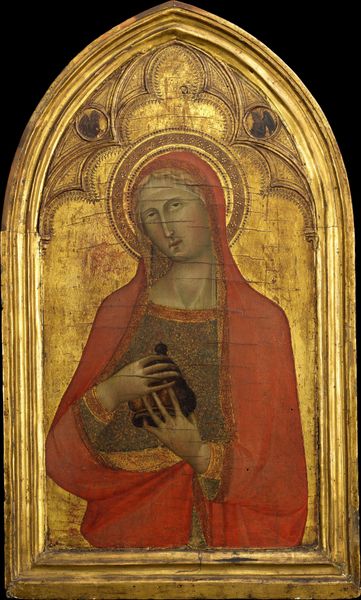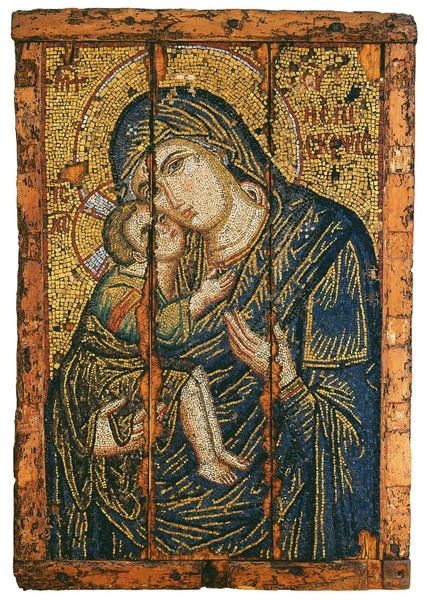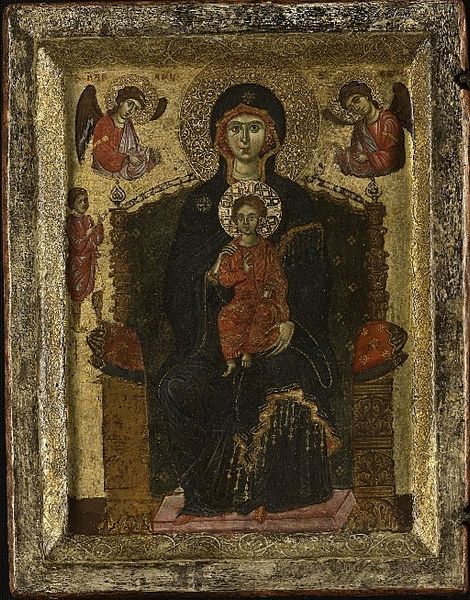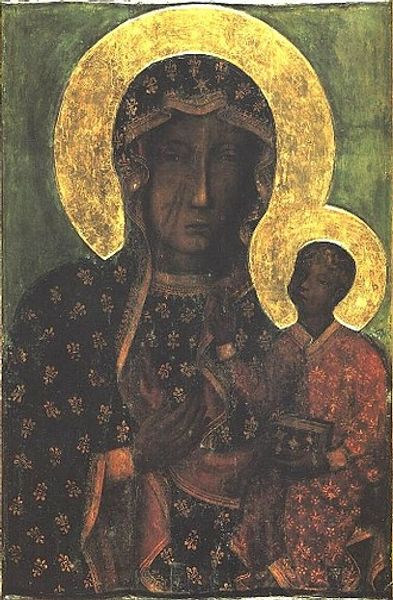
tempera, painting
#
portrait
#
byzantine-art
#
medieval
#
tempera
#
painting
#
oil painting
#
portrait art
Copyright: Orthodox Icons,Fair Use
Curator: Let’s turn our attention now to "Vysotsky Chin: Virgin Mary," an icon created around 1395, and currently residing at the Tretyakov Gallery in Moscow. Editor: My initial impression is one of somber reflection, an introspective mood achieved through the subject’s downcast gaze and muted palette. There’s a beautiful weight to it, both visually and emotionally. Curator: Indeed. Formally, the piece adheres to the Byzantine style, evident in its flattened perspective and the emphasis on symbolic representation rather than naturalism. The Virgin's elongated features, and the deliberate arrangement of her hands invite careful consideration of the emotional intensity. Editor: Placing it within the socio-cultural context, religious icons of this period weren’t merely decorative. They served as powerful conduits for faith and identity within the community. This image likely functioned within both a public, devotional context, but may have had private significance too. Curator: Precisely. Tempera, the medium employed, allows for a particular luminosity. Note how the gold leaf background illuminates the Virgin, and how it contrasts the matte surface of the black clothes. These material qualities direct our eye to the subject’s iconic qualities. Editor: Considering the use of gold leaf and other valuable materials, can we interpret the icon as a reflection of economic and political power, signifying the wealth and influence of the church or the commissioner of the piece? Curator: No doubt. It also shows us how the artwork has come to gain its venerated status as an object but moreover the venerated position the historical person occupies within society. The Virgin Mary's iconic importance shapes the reception of its aesthetic choices. Editor: So we see that the construction of her image and how we consider its importance have both been critical aspects. Curator: It seems our dual perspectives on form and history offer distinct yet valuable insights. Editor: Indeed, bringing them into a discussion generates a deeper understanding.
Comments
No comments
Be the first to comment and join the conversation on the ultimate creative platform.
